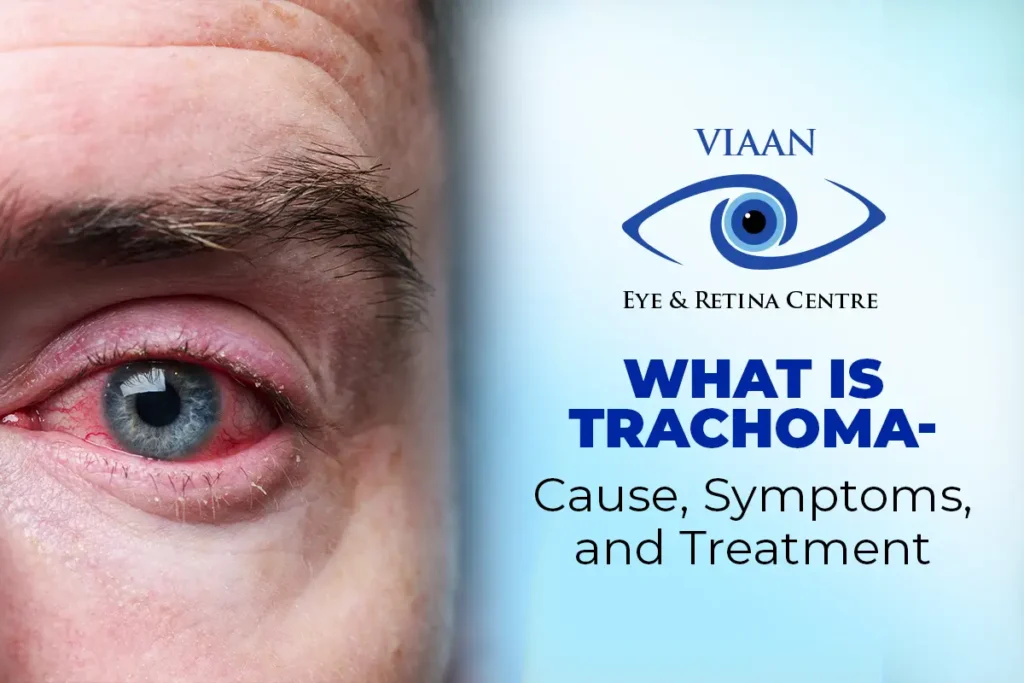Trachoma, a bacterial eye infection, is the world’s leading infectious cause of blindness. While easily treatable in its early stages, repeated infections can have devastating consequences.
In this article, we will explore trachoma, its causes, symptoms, and treatment options available so that one can have a clear understanding of it.
What Is Trachoma?
Trachoma is an eye infection caused by the bacterium Chlamydia trachomatis. It’s the world’s leading cause of infectious blindness, particularly affecting people in poor and remote areas with limited access to clean water and sanitation.
Trachoma spreads through contact with infected people’s eyes or nose discharge. Early on, it causes symptoms like itchy eyes, similar to pink eye. If untreated, repeated infections lead to scarring of the inner eyelid. In severe cases, the eyelashes turn inwards, scraping the cornea and potentially causing blindness.
Treated with antibiotics in the early stages, trachoma is curable. Mass antibiotic distribution and hygiene promotion are key to controlling the spread of this preventable disease.
Transmission
Trachoma spreads primarily through close contact with infected individuals. Infected eyes discharge fluids containing the bacteria, which can be transmitted by:
- Direct contact: Touching an infected person’s eyes or face and then touching your own eyes.
- Shared objects: Using contaminated towels, handkerchiefs, or other personal items.
- Flies: These insects can transport the bacteria from infected eyes to others if they land on the face.
Children under ten are particularly susceptible due to their frequent close contact with each other. Living in crowded conditions further increases the risk of transmission.
Symptoms
Early trachoma often goes unnoticed, especially in children. However, some common signs include:
- Redness and irritation of the eyes (similar to the pink eye)
- Feeling like something is in your eye
- Increased tear production
- Sensitivity to light
- Pus or discharge from the eyes
As the infection progresses and becomes chronic, the following symptoms may develop:
- Thickening of the inner eyelid (conjunctiva)
- Scarring of the cornea (the clear surface of the eye)
- Inward turning of the eyelashes (trichiasis)
Trichiasis is the most concerning complication. With every blink, the misdirected eyelashes scrape against the cornea, causing immense pain, scarring, and ultimately, blindness.
Treatment
The good news is that trachoma is easily treatable in its early stages. The World Health Organization (WHO) recommends a strategy known as SAFE for effective control:
- Surgery: For advanced cases with trichiasis, a simple surgical procedure can remove the affected eyelashes, restoring comfort and preventing further damage.
- Antibiotics: Mass administration of antibiotics, particularly to children, is crucial in reducing transmission and preventing the progression of the disease.
- Facial cleanliness: Promoting good facial hygiene practices, including handwashing and keeping faces clean, helps break the cycle of transmission.
- Environmental improvement: Ensuring access to clean water and sanitation facilities reduces the risk of infection in the long run.
Global Efforts towards Elimination
The WHO’s SAFE strategy forms the basis of a global program aimed at eliminating trachoma as a public health problem by 2030. Significant progress has been made, with several countries achieving elimination status. However, challenges remain in reaching remote areas and ensuring the long-term sustainability of control programs.
The Impact of Trachoma
Beyond the devastating impact on vision, trachoma has far-reaching social and economic consequences. Blindness caused by trachoma can lead to:
- Loss of productivity and income
- Increased dependence on others
- Social isolation and stigma
Eliminating trachoma not only improves individual lives but also contributes to the overall well-being and economic development of communities.
Conclusion
Trachoma is a preventable and treatable eye disease. Early diagnosis, access to antibiotics, and improved hygiene practices are crucial for controlling its spread. By supporting global initiatives and raising awareness, we can achieve a future where trachoma no longer steals sight and hope.
If you are facing any issues related to your eyes- Viaan Eye and Retina Center are here to help, we have a team of Retina Eye Specialist who will use cutting-edge technology at our hospital to detect the problem from the deep, We care about your vision.



